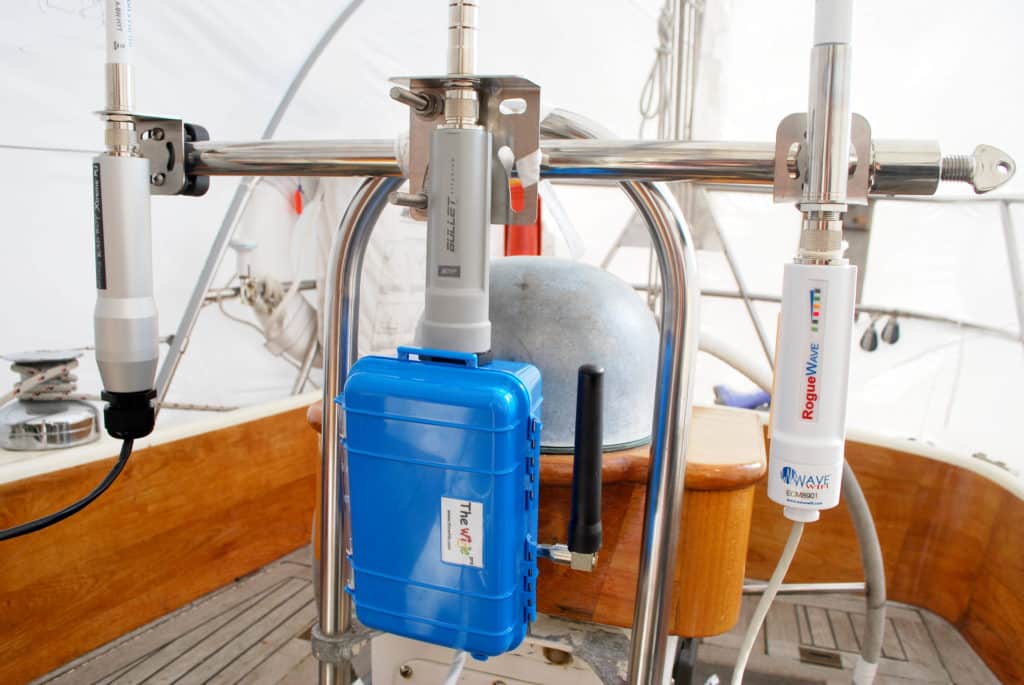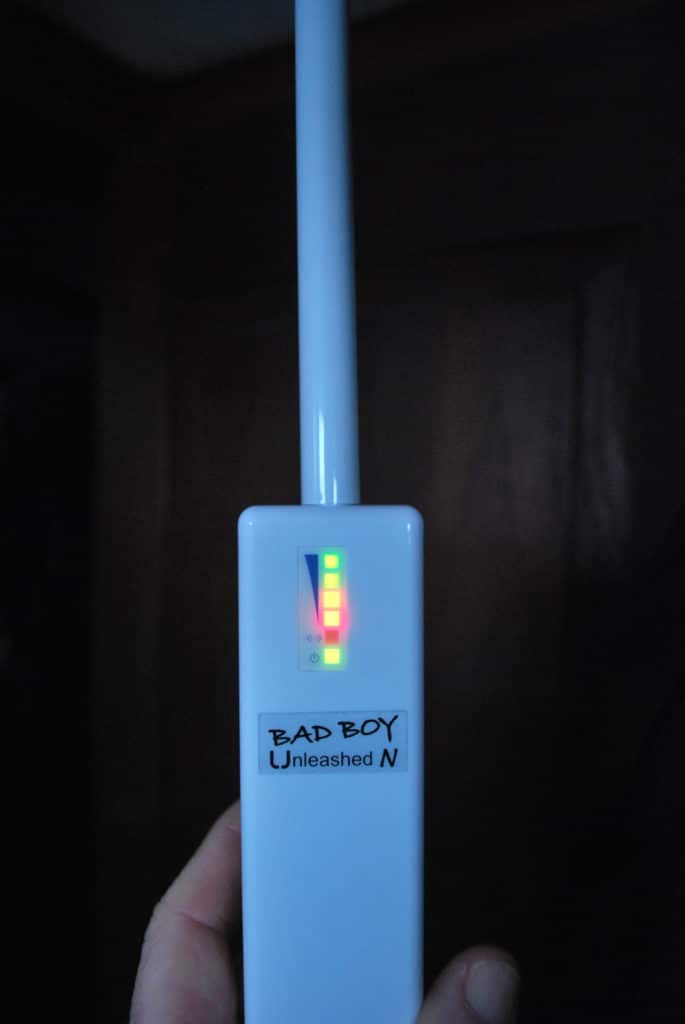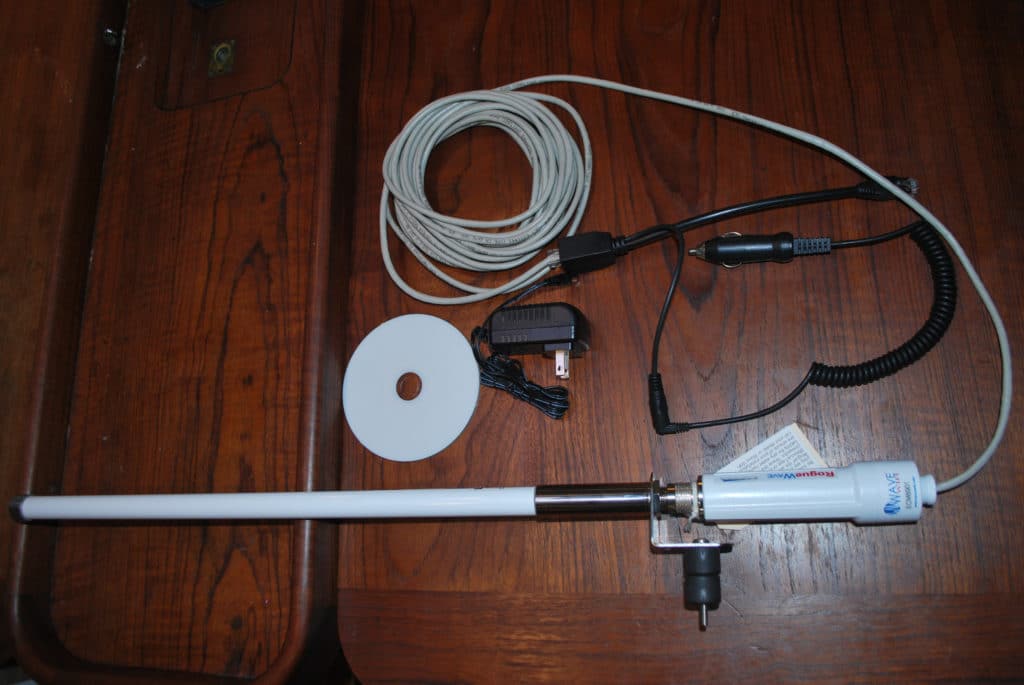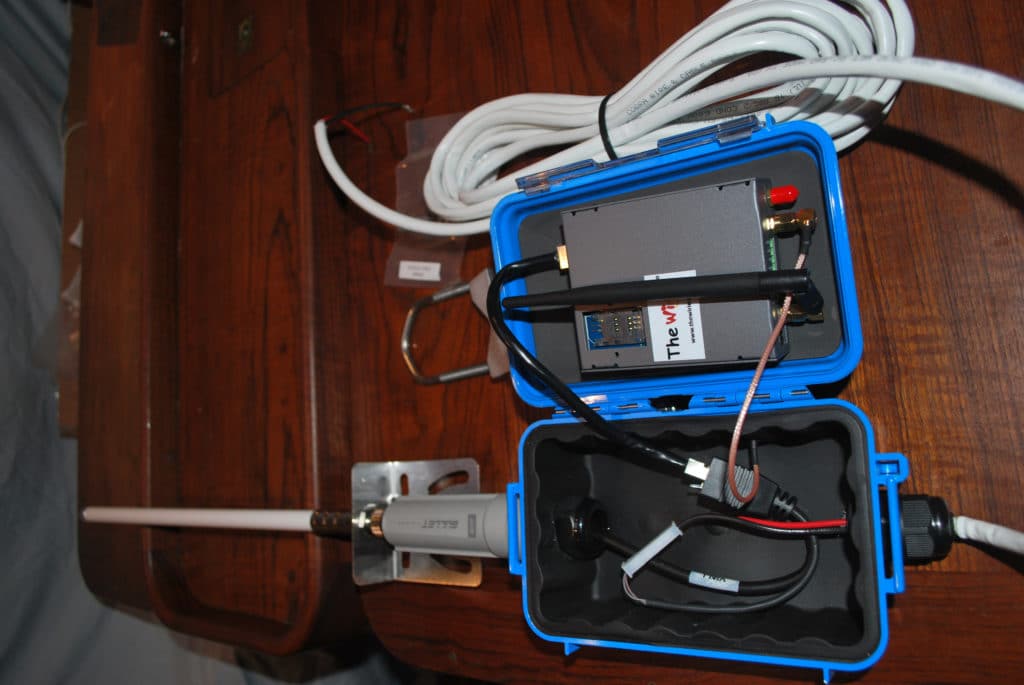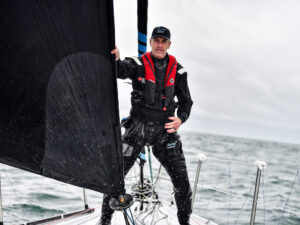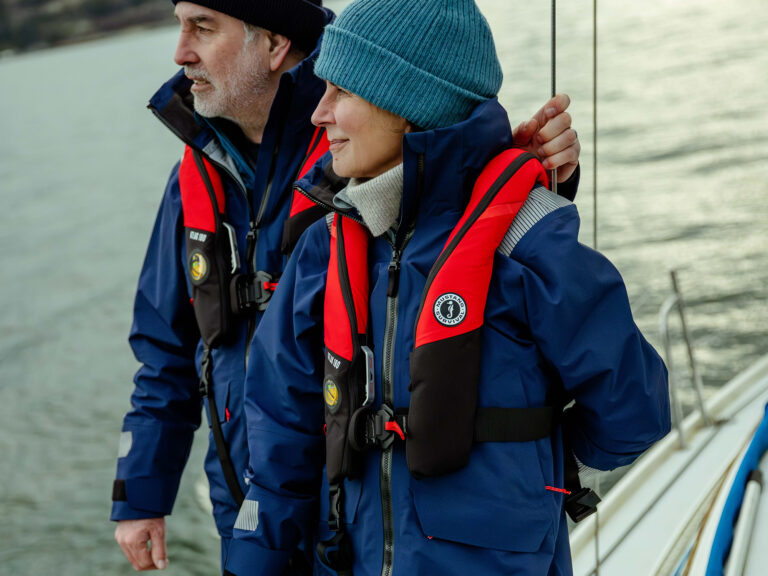Get Connected
On a cold and gray day in mid February, I received three of the more popular marine Wi-Fi systems on the market today. Designed to connect your boat to shore-side access points, each of the products occupies a niche within a niche market. Over the next two days, I read the accompanying literature, installed and tested each system, benchmarking them against my 4-year-old homemade system that is permanently installed aboard our boat Lyra.
This is by no means an exhaustive look at what’s available; I selected units that are readily available and designed specifically for the recreational marine market (not superyachts). These units also represent what might appeal to a variety of users — someone who just needs a casual Internet connection, a techie type and someone who’s Internet dependent because they work remotely.
All three of the products, The Wirie Pro, Rogue Wave and Bitstorm’s Bad Boy Xtreme MJ, use the Ubiquiti Bullet-M2-HP radio device as the cornerstone of their system. The radio device amplifies the signal it receives from local shore-side Wi-Fi stations, known as access points or by the abbreviation AP, and broadcasts your data back at maximum legal output. Range varies depending upon environmental factors, line of sight and the hardware attached to the Bullet-M2-HP. In my testing, each of the systems performed perhaps 25 percent better than Lyra’s older mizzen-mounted Bullet 2HP. As expected with such similar hardware, all three performed in a nearly identical manner with regards to the number of access points each could find. Therefore, I will focus on cost, peripherals, overall ease of setup and use and the firmware interface.
A Great Buy
Built by Wave WiFi, the Rogue Wave has in many ways set the bar in long-range Wi-Fi connectivity onboard boats. Founded in 2009, the Rogue came out in response to users who wanted something like the high-powered units available on the market but at a more attractive price point. The company has successfully created a clean, simple and effective product, and at $350, it’s a great buy.
The Rogue Wave installation was a breeze. As outlined in the Quick Start guide, I put the basic parts together in less than 5 minutes and had the antenna mounted to the test rack a moment later. The end of the Cat5 cable from the unit clips into the power adapter, referred to as the PoE (see “A Wi-Fi Glossary, page 000). One pigtail from the PoE goes to your laptop or your router; the other is connected to a power source. The unit came with both AC and 12-volt adapters; I used use the latter. The system came up immediately.
Once powered up, the Quick Start Guide had me navigate to a startup page where a list of hotspots, ranked by their strength, appeared. I clicked on the best one and moments later I was surfing the web.
The manuals that come with the unit, including the Quick Start Guide, are available online or can be pulled off the CD-ROM that’s included. If you do not have a way to read the CD or get online, be sure to ask for a hard copy of the Quick Start Guide to get you going.
With the firmware’s emphasis on simplicity, there is currently no way to see the MAC address of the hotspot, which can be handy if you have a variety of stations to choose from and know from previous experience which one performs the best. With the Rogue Wave, simply choose the best signal and mark it as a favorite. There is also no security login to prevent access to the firmware on the Radio Device but most users will either plug their laptop directly into the Rogue Wave or plug the antenna into a router that has security.
When I called the company, customer support picked up on the third ring and clearly knew their product. Should you want a tough stainless-steel casing for the radio device, the Rogue Wave Pro is available for an additional $100.
Bottom line? The Rogue Wave is simple to install, set up and use. With an attractive price tag, this system would be a good choice for those who want a Wi-Fi connection to the outside world with a minimum of fuss.
Well-Built and Versatile
The Bad Boy Xtreme MJ with the optional Unleashed N private hotspot bridge had the most pieces to put together out of the three I looked at, and had fairly detailed but clear instructions; it took me about half an hour to piece everything together and install the antenna on my test rack.
Bitstorm supplies a privately branded heavy-duty 75-foot shielded, UV-protected Cat5e cable and a junction box that allows you to shorten the cable if you don’t need the full length or if you need to cut the wire so it can be routed through the deck or other structure and then need to reattach the end connector. (The company recommends drilling a hose to match its size rather than a larger hole to accommodate the end fitting.) The company even includes a cable-stripping tool to make the job easier. The junction box also provides a handy disconnect when the antenna is mounted on a mast that needs to be unstopped.
When I spoke with Michael Lahrkamp at Bitstorm, he suggested that I cut open their antenna, which is also built in-house, so that I could see that there is no wasted space in the unit. While I did not take him up on the offer, the antenna does have the smallest footprint and is ruggedly constructed. The general quality of the hardware throughout the system is excellent. I liked the unit’s compact footprint both on the rail and down below.
I found the firmware interface to be intuitive and highly functional.
Login security is required on both the Unleashed N bridge and the Xtreme radio device. The antenna was designed and built for Bitstorm and is tuned to match the other components in the system. The company is currently testing a cellular data option that they plan to roll out in the near future.
The Bad Boy Xtreme MJ ($389) has a lovely machined, anodized aluminum case that the company says is IP67 rated (dust and waterproof) and protects the electronics inside from electrical interference and static charge during weather events. Costing $40 more than the standard plastic casing of the Xtreme N, this is likely a worthwhile investment. There are a variety of optional mounting packages, including rail, pole and backstay brackets.
The optional Unleashed N bridge is available for about $150 and is powered by the same PoE as the radio device. It uses the connection from the Bad Boy Xtreme radio device and rebroadcasts the signal forming its own private hotspot. Multiple computers and devices can then connect wirelessly and simultaneously to the Unleashed N for Internet and intranet connectivity. The Unleashed N’s firmware allows the end user to adjust the output to up as high as 33dBm (decibel-milliwatts), providing a hotspot up to a mile wide. This allows you to share your signal with other boats in the anchorage, or not. The radio device’s output power can also be adjusted so that access points are not over-driven in close quarters such as a marina setting.
The company will price match with competitors.
Overall, this system is perfect for the boat owner who is looking for high quality components and options. The ability to mount the Unleashed N and the Xtreme MJ in separate locations allows the Xtreme wireless transceiver to be mounted higher for better reception, while the bridge can be located on deck or below for better Wi-Fi connectivity with devices. The option to dramatically change the size of your boat’s Wi-Fi hotspot also could be quite useful. The firmware also shows good details about system performance for those with technical tendencies.
Wi-Fi and Cellular Combined
The Wirie Pro is the latest design offered by Island Consulting. It’s the brainchild of a couple who cruise their 35-foot Fountaine Pajot catamaran extensively. Of the three systems, it had my favorite firmware interface. With the integrated ability to load a SIM card for long-range 2G/3G/4G data reception for when Wi-Fi isn’t available, I feel that this product is a very good buy for Internet-dependent users.
The Wirie Pro comes as an all-in-one package. Just screw the mount on the antenna and install it in a location 4 to 8 feet off the deck, run the supplied heavy-duty marine wire to a 12-volt source and off you go. The instructions are clear and easy to follow. If you have a SIM card, the box attached to the bottom of the radio device opens up for pain-free installation (access to the SIM-card holder is why the antenna needs to be within reach of the deck).
The Wirie firmware seamlessly integrates the router, radio device and cellular receiver. It is clean and intuitive to use, while supplying in-depth hardware and signal information. There is also an option to set up a login page for visitors on your network.
Wirie founder Mark Kilty notes that the SIM card’s APN, or access point name, may need to be configured to work on some networks. This is done via The Wirie software. Most wireless routers do not have SIMs (think of your typical over the counter hotspot), so one of the greatest selling points of The Wirie Pro is the ability to change the card out to change cell networks. Prepaid and local network SIM cards are available all over the world and tend to be less expensive than using non-local networks. Mark notes that cards should only be swapped out with the unit powered down or it will not recognize the new SIM card.
The Wirie Pro’s proprietary router can seamlessly roll your data activity onto the cell network if Wi-Fi is lost and is also the local network router. Representing 10 months of development, it is built specifically for Island Consulting, and has an external antenna for increased range. The company also provides for varying degrees of local network access via a settings area in the firmware. For example, if the radio device is connected to a shoreside hotspot you may wish to share this connection with guests, but limit them from using the paid cell service. You can also create a webpage where you can share your boat’s name or advertise any products you sell. Prospective guests will see it when they attempt to login to your network.
With a price tag of $649, this was the most expensive system that I tested, but with the integrated cellular router you get what you pay for. The components are heavy duty and built to withstand the marine environment. Since the antenna, radio device, local router and cellular data system are all one connected unit, it does need to be located in a safe place away from hard knocks, and the Wirie Pro looks a little bulky when compared to the other products when it’s installed. Island Consulting also builds Wi-Fi-only (The Wirie AP+ at $399) and 2G/3G/4G-only (The Wirie XG at $499) systems.
As our Lyra is an Internet-dependent cruising boat, my personal choice would be The Wirie Pro. In a world where more and more Wi-Fi stations are being locked down with passwords, and cell networks are getting more ubiquitous, less expensive and faster , integrating the Wi-Fi system with cellular data makes a lot of sense. The Wirie Pro performed beautifully and the firmware interface is outstanding. It should be clear that the installation will be a little bit bulky and should certainly be in a protected location.
Conclusion
While it is possible to source the parts and build an onboard Wi-Fi radio device and local network yourself, as I did years ago for Lyra, the pricing of these complete systems is competitive and the proprietary firmware that each company supplies with their product is well worth a few extra bucks.
I have toxic memories of juggling a couple of hotspots, phones and Wi-Fi in order to send or receive critical information during the winter of 2013-14 while we were cruising Lyra. At that time, my wife, Jen, was working remotely to produce this magazine in a team-based environment. Each of the Wi-Fi systems in this article would have been an improvement over our older Bullet 2HP-based unit, and the Wirie Pro’s integrated cell data with its boosted range would have saved us many hours and headaches while we attempted to get a connection up and down the East Coast.
Marine Wi-Fi Resources
Bitstorm: bitstorm.com
Digital Yacht: digitalyachtamerica.com
PDQ Connect: pdqconnect.com
Rogue Wave: wavewifi.com
The Wirie: thewirie.com
WiFiRanger: wifiranger.com
Green Brett lives in Newport, Rhode Island, and is owner of On Watch Sailing (onwatchsailing.com), a day-sail charter company on Narragansett Bay.
A Wi-Fi Glossary
Access Points: Hotspots that provide access to the Internet for your radio device and ultimately your onboard network.
APN: Some data providers, particularly outside of the United States, require the devices that connect to their service to manually enter an Access Point Name. Many networks do not require this and will simply work with the APN value being empty. An example of an APN is internet.t-mobile.
Cat5 cable: Industry-standard cables that connect routers and computers; they look like a large telephone cable (remember those?).
Firmware: The software that interfaces with the radio device and router system to allow you to control the network.
MAC address: Stands for media access control address, which is a unique identifier assigned to network interfaces. Every Wi-Fi transmitter has a MAC address.
Power over Ethernet: Supplies power and serves as a data conduit to routers and the Radio Device over a Cat5 Ethernet cable. It makes for a clean and simple installation of these systems. Often abbreviated PoE.
Radio Device: Hardware that amplifies, sends and receives data and is the heart of your Wi-Fi system. When coupled with an antenna, it enhances the available Wi-Fi hotspots to ultimately allow your devices to surf the Internet over a possible range of several miles.
Router: A device that forwards data through networks. The radio device utilizes a router. The Wi-Fi routers in the evaluated systems allow for added security as well as allowing multiple devices, such as laptops or tablets to connect to the Internet through the single Radio Device.
